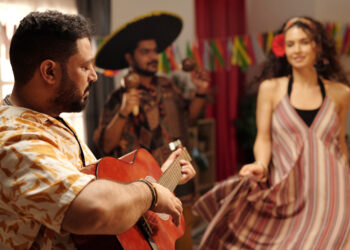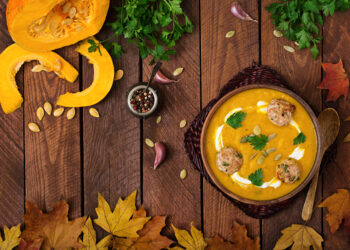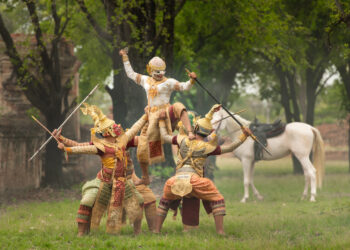Mardi Gras, a French term meaning “Fat Tuesday,” is a centuries-old tradition that marks the final day of indulgence before the Christian season of Lent begins. This vibrant celebration is renowned for its colorful parades, flamboyant costumes, lively music, and festive atmosphere. Mardi Gras has evolved into a cultural phenomenon that transcends religious boundaries and has become a symbol of joy, revelry, and community spirit.
New Orleans: A Melting Pot of Mardi Gras Magic
Nestled along the banks of the Mississippi River, New Orleans stands out as a unique host city for Mardi Gras festivities. Known for its rich history, diverse cultural heritage, and passionate residents known as “New Orleanians,” this city pulsates with energy during Carnival season.
New Orleans’s deep-rooted connection to Mardi Gras dates back to the early 18th century when French settlers brought this tradition to the region. Today, New Orleans has become synonymous with Mardi Gras celebrations that are unrivaled in their grandeur and exuberance.
Origins of Mardi Gras in Europe and its Evolution in America
Mardi Gras, French for “Fat Tuesday,” traces its roots back to ancient European pagan celebrations marking the end of winter and the arrival of spring. The festival evolved over centuries and became intertwined with Christian traditions as a period of feasting before Lent.
In medieval Europe, elaborate masked balls and parades were common during the Carnival season leading up to Lent. When French settlers brought this tradition to the New World, it took on a new life in the vibrant melting pot of cultures that is New Orleans.

Establishment of Mardi Gras Traditions in New Orleans
The first recorded Mardi Gras celebration in New Orleans took place in 1699 when French explorers landed near present-day Louisiana. The city officially embraced the revelry in 1837 when a group of locals organized a procession through the streets with horse-drawn carriages and masquerade balls.
This marked the birth of formal “krewes,” secretive social clubs responsible for organizing parades, balls, and other festivities during Carnival season. Each krewe has its own unique history, rituals, and traditions that contribute to the rich tapestry of Mardi Gras culture in New Orleans.
Key Historical Events that Shaped Mardi Gras in the City
Throughout its history, Mardi Gras in New Orleans has weathered various challenges and transformations that have shaped it into the iconic celebration it is today. The Civil War disrupted festivities briefly, but they resumed with vigor post-Reconstruction era as a way to boost morale and tourism.
In 1875, Rex – King of Carnival was introduced as an official symbol of Mardi Gras royalty. The Great Depression tested the resilience of local krewes but ultimately strengthened community bonds through shared hardship.
Additionally, racial integration efforts led to greater inclusivity within krewes and parades over time. These pivotal moments highlight how Mardi Gras reflects not just celebration but also societal change within this historic city.
Preserving and Celebrating Local Culture
Mardi Gras in New Orleans serves as a vibrant tapestry that weaves together the city’s rich history, diverse heritage, and unique traditions. This annual celebration plays a crucial role in preserving and celebrating the local culture of New Orleans.
From the flamboyant costumes to the lively music and spirited parades, every aspect of Mardi Gras reflects the essence of the city’s cultural identity. The festival’s roots run deep in New Orleans’ history, dating back to the early French colonial period, and have evolved over centuries to become a cherished tradition that unites communities across all walks of life.
Influence of Diverse Cultural Influences
One of the most fascinating aspects of Mardi Gras in New Orleans is its dynamic blend of diverse cultural influences that have shaped its traditions over time. The festival incorporates elements from French, African, Spanish, and Native American cultures, creating a colorful mosaic of customs and rituals.
From the rhythmic beats of African drumming to the elegant masquerade balls inspired by European aristocracy, Mardi Gras showcases a fusion of traditions that reflect the city’s multicultural heritage. This interplay of different cultural influences not only adds depth and richness to the festival but also highlights the spirit of unity in diversity that defines New Orleans.
Resilience and Revival After Hurricane Katrina
The devastating impact of Hurricane Katrina in 2005 cast a shadow over New Orleans Mardi Gras, raising concerns about whether this beloved celebration could bounce back from such a tragedy. However, what followed was a remarkable display of resilience and revival as locals rallied together to ensure that Mardi Gras would endure against all odds.
The post-Katrina era saw new energy infused into the festival, with an outpouring of creativity and community spirit that revitalized Mardi Gras celebrations. Through rebuilding efforts, fundraising initiatives, and sheer determination, New Orleans not only preserved its cherished tradition but also demonstrated its unwavering commitment to resilience in times of adversity.
Parades: Revelry in Motion
The parades during New Orleans Mardi Gras are a vibrant spectacle that captivates locals and visitors alike. Each parade is organized by a krewe, which is a social club responsible for planning and executing the parade.
Some of the most famous krewes include Krewe of Bacchus, Zulu Social Aid & Pleasure Club, and Krewe of Rex. These krewes have unique histories and traditions that add depth to the overall Mardi Gras experience.
Parades feature colorful floats adorned with intricate decorations, throwing beads, trinkets, and other Mardi Gras treasures to cheering crowds lining the streets. The energy and excitement during these parades are infectious, creating an atmosphere of joy and celebration that is truly unmatched.
Costumes and Masks: Unveiling Tradition
One of the most enchanting aspects of New Orleans Mardi Gras celebrations is the elaborate costumes and masks worn by participants. These costumes are not just for show; they carry deep traditions, symbolism, and craftsmanship that reflect the rich cultural tapestry of New Orleans. From traditional jester outfits to intricately designed Venetian masks, each costume tells a story or represents a character from mythology or folklore.
The artistry behind these costumes is remarkable, with intricate beadwork, sequins, feathers, and other embellishments creating stunning visual displays. Masks play a significant role in Mardi Gras as they allow individuals to embrace anonymity and revel in the spirit of mischief and fun without inhibition.
King Cake: A Sweet Tradition
No discussion about New Orleans Mardi Gras would be complete without mentioning the iconic King Cake. This delicious pastry holds a special place in the hearts of locals as it symbolizes unity, tradition, and community spirit during Carnival season.
The history of King Cake dates back centuries to European celebrations like Epiphany where it represented the three kings who visited baby Jesus. In New Orleans, King Cake is enjoyed throughout Carnival season leading up to Fat Tuesday (Mardi Gras Day).
The cake itself is typically braided dough filled with cinnamon or cream cheese then topped with colored sugar in traditional Mardi Gras colors – purple for justice, green for faith, and gold for power. A small plastic baby figurine hidden inside the cake adds an element of surprise where whoever finds it must host the next King Cake party – continuing this sweet tradition throughout Mardi Gras festivities.
Behind the Scenes: The Making of a Mardi Gras Parade Float
Overview of Float Building Process from Design to Completion
The creation of Mardi Gras parade floats is a meticulous and collaborative process that begins months before the carnival season. It all starts with a concept or theme chosen by the krewe organizing the parade. Talented designers then sketch out intricate plans, mapping out every detail from the overall structure to the tiniest decorations.
Once the design is finalized, skilled craftsmen and artists bring it to life using a variety of materials such as Styrofoam, paper-mache, and vibrant paints. Each float is constructed with precision and attention to detail to ensure it captures the essence of Mardi Gras extravagance.
Role of Krewes, Artists, and Volunteers in Creating Elaborate Floats
The process of building Mardi Gras parade floats involves a diverse team of individuals working together harmoniously. Krewes play a central role in overseeing the entire production, providing financial support, and making creative decisions. Talented artists lend their skills in painting intricate designs and crafting decorative elements that adorn the floats.
Volunteers contribute their time and effort in assembling pieces, adding finishing touches, and ensuring that each float meets the high standards expected during Mardi Gras celebrations. It is truly a collective effort that showcases the spirit of community and creativity.
Unique Features and Themes Seen on Floats During Parades
Mardi Gras parade floats are known for their dazzling displays of creativity and thematic elements that captivate audiences along parade routes. From larger-than-life sculptures to intricate floral arrangements, each float is designed to tell a unique story or convey a specific message related to the overall theme of the parade.
Themes can range from historical events to mythical creatures or pop culture references, reflecting the diverse interests and inspirations of those involved in creating these works of art. Spectators can expect to see vibrant colors, eye-catching props, animated figures, and special effects that make each float a true spectacle worth beholding during Mardi Gras festivities.
Music & Dance: The Soulful Rhythms & Moves Of The Big Easy During Carnival Season
Brass bands & jazz music that fill the streets with infectious energy
The vibrant beats of brass bands and the soulful melodies of jazz music are at the heart of Mardi Gras celebrations in New Orleans. As the city comes alive with color and revelry during Carnival season, the streets resonate with the infectious energy of these musical genres.
Brass bands, with their lively tunes and dynamic performances, lead parades through the historic neighborhoods, setting a jubilant tone for all to enjoy. Jazz music, deeply rooted in New Orleans’ cultural history, adds a sophisticated yet lively ambiance to Mardi Gras festivities, captivating locals and visitors alike with its improvisational flair and rhythmic intensity.
Traditional dances like Second Line Parade & Zydeco dancing that embody the spirit
The traditional dances of New Orleans play a vital role in embodying the spirit of Mardi Gras. The Second Line Parade dance is a quintessential part of New Orleans culture, characterized by its exuberant movements and joyful expressions. Participants in this dance form follow behind brass bands in parades, twirling parasols and handkerchiefs as they strut through the streets with unmatched enthusiasm.
Zydeco dancing, another cherished tradition in Louisiana Creole culture, infuses Mardi Gras celebrations with its lively steps and energetic rhythms. Originating from rural Creole communities, Zydeco dancing brings people together on dance floors during Carnival season, showcasing intricate footwork and spirited movements that speak to the rich heritage of Louisiana’s diverse population.
Culinary
New Orleans Mardi Gras is not just a feast for the eyes and ears but also for the taste buds, with its rich culinary traditions that reflect the city’s diverse heritage. One of the most iconic Mardi Gras treats is the King Cake, a sweet pastry symbolizing the three kings. This oval-shaped cake is decorated in traditional Mardi Gras colors of purple, green, and gold and often contains a hidden trinket or figurine.
Another must-try during Mardi Gras season is gumbo, a hearty stew that blends African, French, Spanish, and Native American influences. The spicy flavors and soul-warming goodness of gumbo perfectly complement the festive atmosphere of Mardi Gras celebrations.
Conclusion
New Orleans Mardi Gras embodies the spirit of resilience, creativity, and cultural richness that defines this vibrant city. Despite facing challenges like Hurricane Katrina, Mardi Gras has continued to thrive and evolve over the years.
The celebration serves as a powerful reminder of the community’s strength and unity in coming together to revel in joyous festivities. As we savor the sights, sounds, tastes, and traditions of New Orleans Mardi Gras, let us be inspired by its ability to bring people together in love and celebration—showcasing the beauty of cultural diversity and human connection.

















